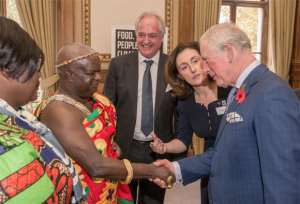
Trees
PROTECT THE FOREST RESERVE AND PLANT MORE TREES
Sacred forest groves dot the otherwise increasingly degraded landscape of Ghana, in West Africa, providing oases of biodiversity and tradition. The pressures of poverty, cultural change, and migration are causing inhabitants to harvest resources from the groves at an unsustainable rate. Several promising partnerships between international organizations, the Ghanaian government, and local communities have demonstrated the ways that reverence for the groves may be translated into environmental preservation and sustainable livelihoods. In his report “Religion and Conservation in Ghana,” Ghanaian environmental journalist Mike Anane writes, “It is gratifying that in Ghana today, some NGOs and scholars are recognizing the importance of various traditional religious beliefs or culture-based knowledge systems in addressing alarming problems of environment and development … The old ‘top-down’ or paternalistic forms of development can no longer be enough in the face of environmental catastrophe.”
The Royal House of Sefwi Obeng-Mim's Stool Land is amid a natural rainforest reserve (Boin National Park) with all kinds of animal species and unique weather conditions. In the Stool Land, we have the Tree of God (Nyame Dua), the Ancestral Hole (which has healing powers), and the Abombirim Sacred Tortoise Forest. The natural resources and the forest are sacred to the traditional Akan and Sefwi people of the area
The Royal House of Sefwi Obeng Mim, the local council, as well as the HM Katakyie Kwasi Bumagama, the Paramount King (Omanhene), and the Traditional Area Council of Sefwi Wiawso are committed to protecting the forest reserve and planting more trees for the economic and environmental health of Ghana and the world.
Click here for Information on the Western North Region of Ghana
Click here to read an article from the World Bank on the importance of trees to Ghana: Ghana: Balancing economic growth and depletion of resources
News Archives
- Sefwi Wiawso Paramount Chief Meets Prince Charles On Ways To Protect Forest Reserves
- New ‘Forestry House’ to be constructed in Western North Region, Sefwi Wiawso
- HM Katakyie Kwasi Bumagama, Paramount Chief of Sefwi Wiawso Traditional Area and a member of the Council of state led the Western North Tree Planting exercise with the Western North Regional Minister and Martha Kwayie the Deputy Forestry commissioner.

